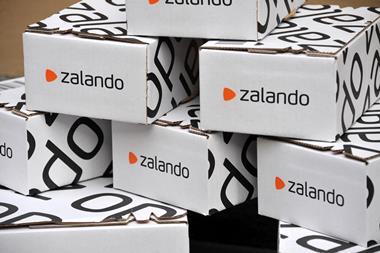With sales from social commerce providing an exciting opportunity for retailers, PayPal’s Fauzzia Culkin takes a closer look at this new revenue stream.
The rise of social commerce
Thanks to the visual, ever-changing and instant nature of social media, it has become essential in the way people are staying connected, and discovering new products and services locally and globally, without leaving their favourite platform.
Social commerce is paving the way for a new digital shopping revolution. In 2021, global social commerce sales totalled $492bn (£410bn), expected to nearly triple by 2023 to $1.2tn (£999bn), according to Accenture.
But less than a third of advertising budgets are currently allocated to social media advertising, reports Statista, which means many ecommerce businesses aren’t focusing on driving sales through social media platforms yet.
Social commerce presents a profitable opportunity for businesses to reach more customers who are open to trying new brands and products.
So what is social commerce?
First came bricks and mortar, then ecommerce. Social commerce combines the experience of social media and ecommerce transactions on one platform.
A user discovers a new product on social media and can instantly buy it without leaving the platform.
How did social commerce start?
Yahoo! is credited with introducing social commerce with its ‘Shoposphere’ and ‘Pick Lists’ functions in 2005.
In 2022, social commerce evolved to include on-platform Instagram shopping, Facebook Marketplace and product pins on Pinterest, allowing users to buy products directly from their social media feeds.
The difference between social advertising and social commerce
While social advertising and social commerce might sound similar, they follow different pathways.
Any ad running on a social media platform falls under social advertising. A Facebook or Instagram ad is an example of social advertising based on targeting an existing or new audience.
Unsurprisingly, business social media ad spend in 2022 is expected to total $173m (£144m), according to Statista.
Social media can be used to capture leads, create awareness, drive traffic to various online places like landing pages and websites, and much more.
Social commerce, however, focuses on purchases and reducing the steps between interest and the transaction.
Typically, traditional ecommerce ads direct users away from the social media platform toward a website or landing page where they buy the products. But with social commerce, the transaction, discussion and shopping all happen on the platform.
The future is social commerce
Social commerce is set to transform the digital shopping landscape for businesses and consumers.
According to insider intelligence eMarketer, more than 300 million new users went online between 2019 and 2020, and time spent on social media has gone up, with the typical user spending 2.5 hours daily on their favourite social media site.
Businesses need to understand how to integrate social commerce into their strategy so their customers can enjoy seamless shopping experiences without leaving the platform they’re using.
How will social commerce evolve in the next three to five years? Download our Think Forward: The New Buying and Payment Experience Report to find out.
Fauzzia Culkin is Enterprise marketing director EU/AU at PayPal



























